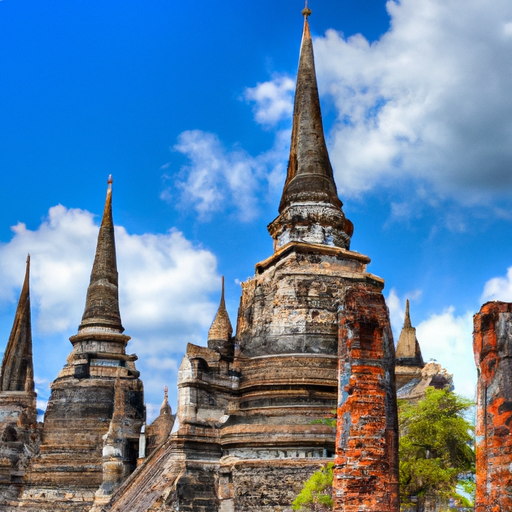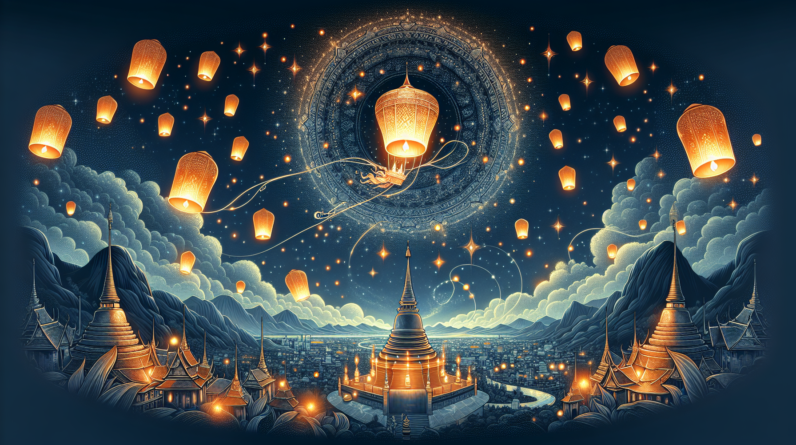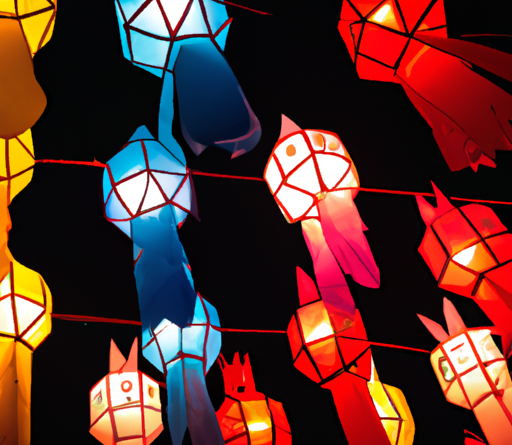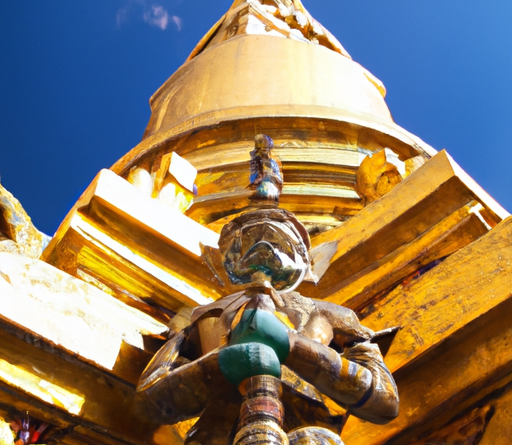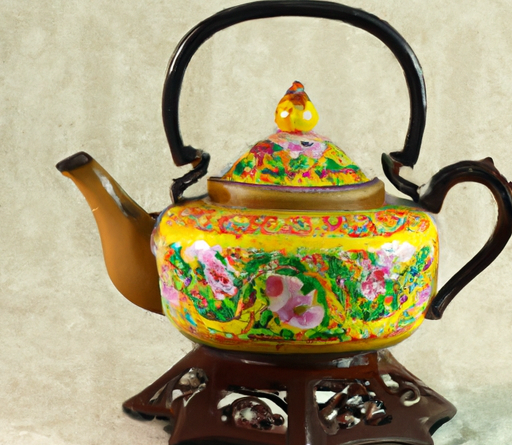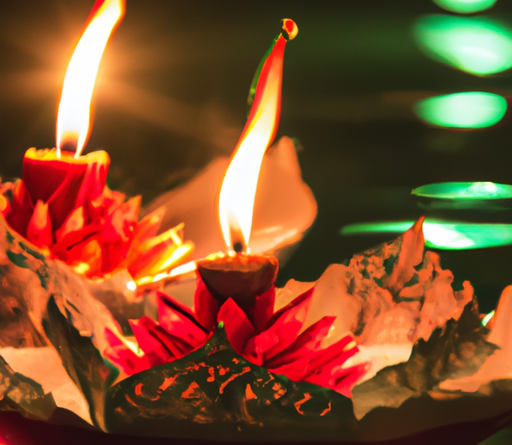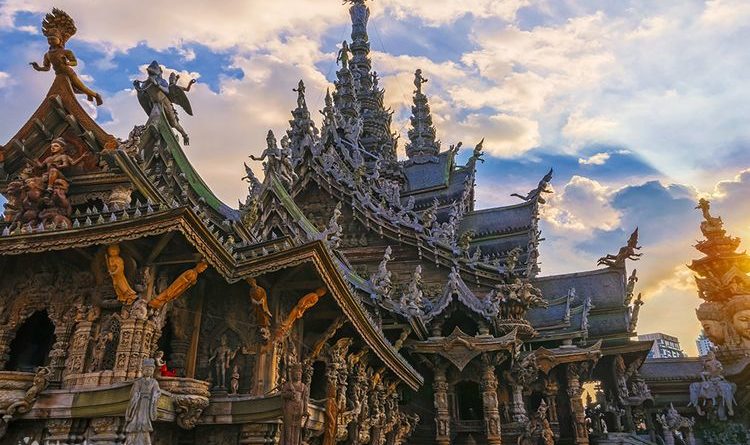
Have you ever wanted to immerse yourself in the beauty and serenity of Thai temples? Well, in this article, we will be diving into the world of Thai temples, exploring their stunning architecture and the spiritual significance they hold. From the famous Wat Arun with its towering spires, to the peaceful Wat Phra That Doi Suthep nestled in the mountains, these temples are not only architectural marvels but also sacred sanctuaries that offer a glimpse into Thailand’s rich cultural heritage. So get ready to learn more about these magnificent structures and the spiritual experiences they offer!
If you’re curious to know more about the history, design, and spiritual practices associated with Thai temples, then this article is perfect for you. We will be delving into the origins of these temples, the intricate details of their architecture, and the unique rituals and ceremonies that take place within their sacred walls. Whether you’re a seasoned traveler or simply someone interested in exploring different cultures, this article will provide you with a fascinating insight into the world of Thai temples. So, get ready to embark on a virtual journey to Thailand and discover the wonders of these architectural marvels and spiritual sanctuaries.
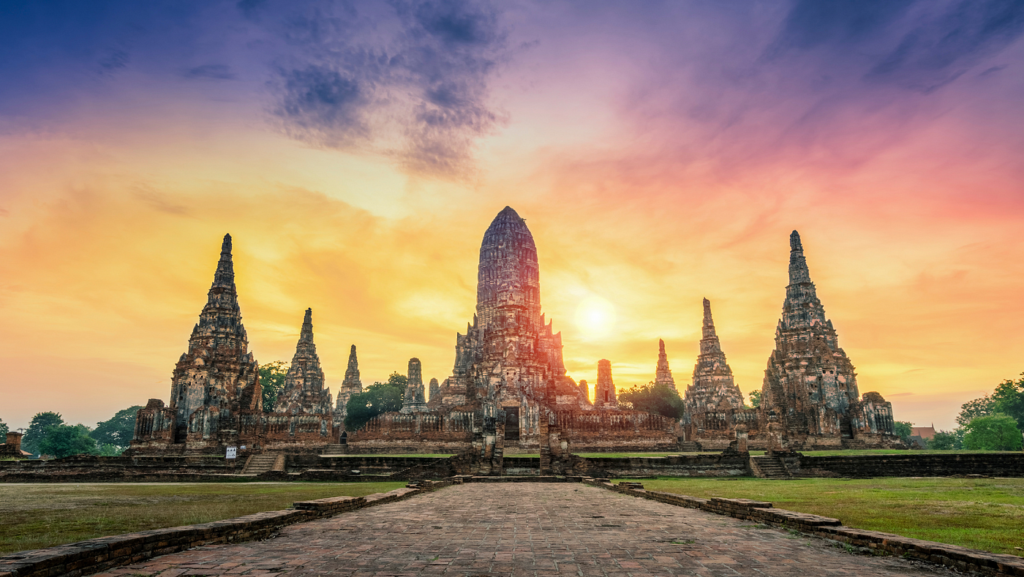
This image is property of miro.medium.com.
Architecture of Thai Temples
Thailand is renowned for its rich cultural heritage and stunning architecture, and it is no surprise that one of the most iconic and impressive architectural wonders are the Thai temples, also known as “Wat” in the Thai language. These temples not only showcase the country’s unique architectural style, but also hold significant cultural and spiritual importance for the Thai people. Let’s delve into the fascinating world of Thai temple architecture and discover the distinctive features, influences, and symbolism behind these magnificent structures.
Distinctive Features of Thai Temple Architecture
Thai temple architecture is characterized by its intricate beauty, vibrant colors, and ornate detailing. One of the most distinguishing features of Thai temples is their prominent and towering roofs, also known as “prasat” or “sala.” These multi-tiered roofs often feature gilded decorations, magnificent carved wooden eaves, and intricate designs that represent mythical serpents known as “nagas.” The elevated roofs create an illusion of weightlessness, adding a sense of grandeur and elegance to the temples.
In addition to the majestic roofs, Thai temples typically have intricately carved and decorated facades. These facades often depict stories from Buddhist scriptures, historical events, or traditional Thai folklore. The attention to detail and craftsmanship in these carvings is truly remarkable and reflects the dedication and devotion of the artisans who created them.
Influence of Indian and Chinese Architectural Styles
The architecture of Thai temples has been heavily influenced by both Indian and Chinese styles. The arrival of Buddhism from India during the 3rd century BCE brought with it architectural concepts such as the use of stupas or sacred pagodas, which became an integral part of Thai temple design. The influence of Indian architecture can be seen in the presence of chedis, which are towering structures that house relics of the Buddha or revered monks. These chedis often feature intricate designs and are considered sacred by Thai Buddhists.
Chinese architectural elements have also left a lasting impact on Thai temple architecture. The use of intricate ornamentation, vibrant colors, and glazed ceramic tiles are reminiscent of Chinese temple design. Many Thai temples also feature guardian lions, known as “singha,” which are believed to protect the temple from evil spirits and bring good luck.
Use of Intricate Ornamentation and Detailing
Thai temples are known for their opulent ornamentation and attention to detail. Elaborate wood carvings, delicate stucco work, and shimmering gold leaf are commonly used to adorn the interior and exterior of the temples. These ornate decorations not only enhance the aesthetic appeal of the temples but also serve as a visual representation of religious and spiritual beliefs.
The interiors of Thai temples are often adorned with meticulously painted murals that depict scenes from Buddhist scriptures, important historical events, or the life of the Buddha. These murals are not only beautiful works of art but also serve as a medium to educate and inspire worshippers.
Key Thai Temple Structures
Thai temples are made up of several key structures, each with its unique purpose and significance. Let us explore the three main structures that can be found in most Thai temples.
The Ubosot: Ordination Hall
The Ubosot, sometimes referred to as the ordination hall, is the most sacred building in a Thai temple. This hall is where ordination ceremonies take place and where monks gather to perform their daily rituals and prayers. The Ubosot is typically located in the center of the temple complex and is often surrounded by a wall or railing to signify its sacredness.
The architectural style of the Ubosot varies from temple to temple, but it usually features a distinctive spire-like roof, intricately designed eaves, and elaborate decorations. The interior of the Ubosot is usually simple and serene, with a main Buddha image as the focal point.
The Chedi: Sacred Pagoda
The Chedi, also known as the pagoda, is another iconic and significant structure in Thai temples. The Chedi is a tower-like structure that serves as a monument to house relics of the Buddha or revered monks. These relics are considered sacred and are believed to bring blessings and spiritual merit to those who pay their respects.
Chedis come in various shapes and sizes, ranging from simple and modest designs to towering and elaborate structures. Some Chedis are built in the shape of bell-shaped domes, while others are adorned with intricate decorative elements such as statues, carvings, and colorful tiles. Visiting a Chedi is a common practice for Thai Buddhists, who often make offerings and perform prayers at these sacred sites.
The Viharn: Assembly Hall
The Viharn, also known as the assembly hall, is a multifunctional structure within a Thai temple. It is a place for religious ceremonies, gatherings, and meditation. The Viharn is often the largest building in the temple complex and is typically located towards the front or center of the temple grounds.
The architectural style of the Viharn is similar to that of the Ubosot, with its prominent roof and intricate detailing. However, the Viharn tends to have a more spacious and open interior, allowing for larger gatherings and events. In many Viharns, you can find exquisite Buddha images, beautifully painted murals, and intricate wood carvings that add to the overall grandeur of the structure.
Significance of Thai Temples
Thai temples hold deep spiritual, cultural, and social significance for the Thai people. Let us explore the various roles that these temples play in Thai society.
Role in Thai Buddhism and Spiritual Life
Thai temples are at the heart of Thai Buddhist culture and serve as essential centers for religious practice and spiritual development. They provide a space for monks and laypeople to come together for meditation, prayer, and the study of Buddhist teachings. Thai temples also serve as a place of refuge and solace, allowing individuals to seek peace and enlightenment.
The presence of Thai temples in every community ensures that Buddhist values and teachings are accessible to all. It is through these temples that individuals can deepen their understanding of Buddhist principles and find guidance and support in their spiritual journeys.
Center of Community and Social Activities
Thai temples are not just places of worship; they also serve as vibrant community hubs where social and cultural activities take place. Temples often host festivals, ceremonies, and events that bring the community together. These occasions provide an opportunity for people to celebrate, share, and preserve their cultural heritage.
Temples also play an essential role in supporting the local community. They provide education, healthcare, and social services to those in need. Additionally, Thai temples serve as a safe haven for the vulnerable, offering shelter and assistance to those facing hardships.
Symbolism and Meaning of Thai Temple Design
Thai temple architecture is not merely a display of artistic skill and craftsmanship; it carries profound symbolism and meaning. Every intricate detail, from the shape and color of the roofs to the carvings and murals, holds significant spiritual significance.
The towering roofs of Thai temples symbolize the ascent to Nirvana, the ultimate goal of Buddhist practice. The ornate carvings and decorations represent the infinite compassion and wisdom of the Buddha. Colors such as gold and blue are often used to symbolize enlightenment and purity.
Furthermore, the layout and orientation of Thai temples follow precise principles dictated by ancient beliefs. For example, the main entrance of the temple complex often faces east, symbolizing the direction of the Buddha’s birth. The arrangement of structures within the temple complex is also carefully considered to create a harmonious and balanced environment conducive to spiritual practice.
Famous Thai Temples to Explore
Thailand is home to countless magnificent temples, each with its unique charm and historical significance. Here are three of the most famous Thai temples that are definitely worth exploring:
Wat Arun (Temple of Dawn) in Bangkok
Located on the banks of the Chao Phraya River in Bangkok, Wat Arun, also known as the Temple of Dawn, is an icon of the city’s skyline. Its distinctive prang, a tower-like structure covered in colorful porcelain tiles, is not to be missed. Climbing to the top of the prang offers a breathtaking view of the river and the city.
Wat Phra Kaew (Temple of the Emerald Buddha) in Bangkok
Situated within the grounds of the Grand Palace in Bangkok, Wat Phra Kaew is revered as the most sacred temple in Thailand. It houses the famous Emerald Buddha, a highly revered image of the meditating Buddha carved from a single block of jade. The intricate detailing and craftsmanship of this temple are awe-inspiring.
Wat Phra That Doi Suthep in Chiang Mai
Perched on a mountain overlooking Chiang Mai, Wat Phra That Doi Suthep is a must-visit temple in northern Thailand. The temple offers a serene and spiritual atmosphere, adorned with golden statues, intricate carvings, and stunning views of the surrounding city. To reach the temple, you can climb the 309 steps of the sacred Naga staircase or take a cable car.
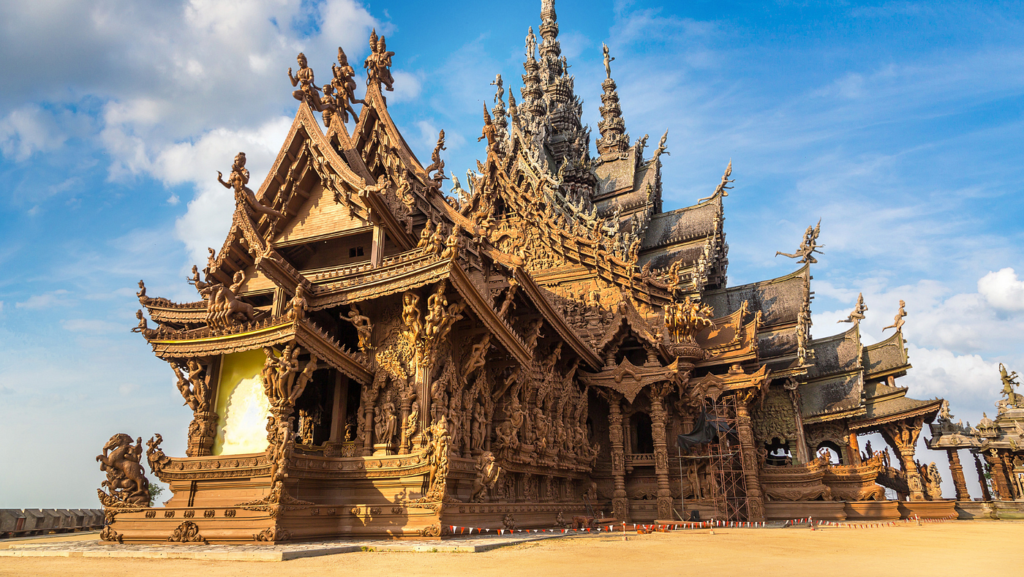
This image is property of miro.medium.com.
Etiquette and Customs when Visiting Thai Temples
When visiting Thai temples, it is essential to respect and adhere to certain customs and traditions. Here are some guidelines to ensure a meaningful and respectful experience:
Dress Code and Proper Attire
When entering a Thai temple, it is crucial to dress modestly and respectfully. Both males and females should cover their shoulders and knees. Avoid wearing revealing or tight-fitting clothing. It is also customary to remove hats and sunglasses before entering the temple grounds.
Removing Shoes and Observing Silence
Upon entering the temple, it is customary to remove your shoes as a sign of respect. You can leave your shoes at the entrance or carry them in a bag if you prefer. It is also important to observe silence within the temple grounds to maintain a serene and contemplative atmosphere.
Respecting Statues and Buddha Images
When approaching statues or Buddha images within the temple, it is customary to show reverence and respect. Avoid touching or climbing on these sacred objects. Instead, practice mindful observation and offer a silent prayer or contemplation.
Thai Temple Festivals and Celebrations
Thai temples come alive during festivals and celebrations, offering a glimpse into the vibrant culture and spiritual traditions of Thailand. Here are three prominent Thai temple festivals that are not to be missed:
Songkran: Thai New Year Water Festival
Songkran is the Thai New Year festival celebrated with great enthusiasm throughout the country. It is a time when people come together to cleanse themselves of the past year’s misfortunes and make wishes for the year ahead. Temples become focal points for ceremonial rituals, merit-making, and vibrant water fights as a way to bring blessings and good luck.
Loi Krathong: Festival of Lights
Loi Krathong, also known as the Festival of Lights, is a magical celebration that takes place on the full moon night of the twelfth lunar month. During this festival, people release beautifully decorated lotus-shaped rafts, called “krathongs,” onto rivers and lakes to symbolize letting go of negativity and starting anew. Temples are adorned with colorful lanterns, and candlelit processions create a mesmerizing sight.
Visakha Bucha: Commemorating the Birth, Enlightenment, and Passing of Buddha
Visakha Bucha, also known as Vesak, is one of the most significant Buddhist holidays in Thailand. It commemorates the birth, enlightenment, and passing of the Buddha. Temples are filled with devout worshippers who gather to make merit, listen to sermons, and participate in candlelit processions. The atmosphere is one of deep reverence and spiritual reflection.
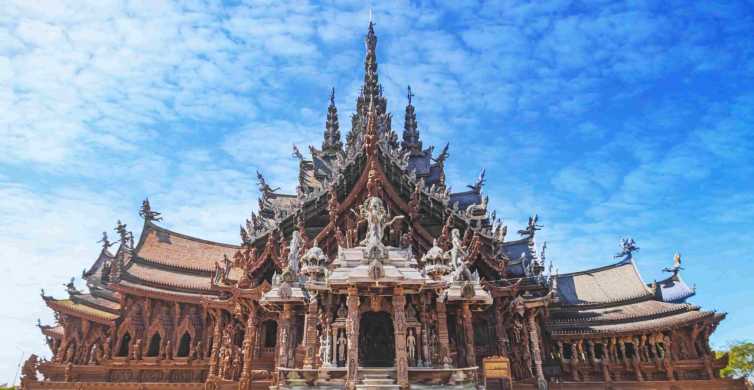
This image is property of cdn.getyourguide.com.
Sustainable Practices in Thai Temple Preservation
Preserving the cultural and architectural heritage of Thai temples is crucial for future generations. Efforts are being made to ensure the sustainability and longevity of these magnificent structures. Here are three major areas where sustainable practices are being implemented:
Conservation Efforts for Historical Temples
Many historical Thai temples have undergone restoration and conservation projects to preserve their original splendor. These initiatives involve meticulous research, documentation, and architectural techniques to ensure the preservation of the temples’ unique features. By protecting these historical sites, future generations can continue to appreciate and learn from Thailand’s rich cultural heritage.
Promoting Eco-Friendly Practices
Thai temples are increasingly adopting eco-friendly practices to reduce their environmental impact. This includes implementing energy-efficient lighting systems, recycling programs, and water conservation measures. Additionally, some temples have started organic farming and sustainable agriculture projects to provide food for the temple and local communities.
Engaging Local Communities
Preserving Thai temples involves engaging local communities and creating a sense of ownership and responsibility. This is done through education and awareness programs that emphasize the importance of temple preservation. By involving local communities in restoration projects, there is a greater understanding of and connection to the historical and cultural significance of the temples.
Thai Temple Cuisine and Food Offerings
Thai temples are not only places of spiritual practice but also gateways to culinary delights. Let’s explore the unique relationship between Thai temples and food.
Monks’ Alms Offering and Daily Food Rituals
In the early morning, monks participate in the Alms Round, where they walk barefoot through the streets to collect food offerings from the community. This practice not only provides sustenance for the monks but also allows laypeople to gain merit and cultivate generosity. It is considered a sacred and humbling experience for both the monks and the community.
Thai Vegetarian Cuisine at Temple Fairs
Thai temples often host temple fairs, known as “watsadu” or “tak bat,” where an array of vegetarian food stalls are set up. These temple fairs offer a variety of delicious and flavorful vegan and vegetarian dishes that cater to the Buddhist principle of ahimsa (non-harming). From spicy curries to refreshing salads and sweet desserts, Thai temple fairs are a gastronomic delight.
Special Occasions and Temple Feasts
On special occasions such as religious festivals or significant anniversaries, Thai temples may organize grand feasts and communal meals, known as “kenhin” or “dana.” These feasts are an opportunity for the community to come together, share food, and celebrate. The meals are usually vegetarian or vegan, reflecting the Buddhist practice of compassion towards all living beings.
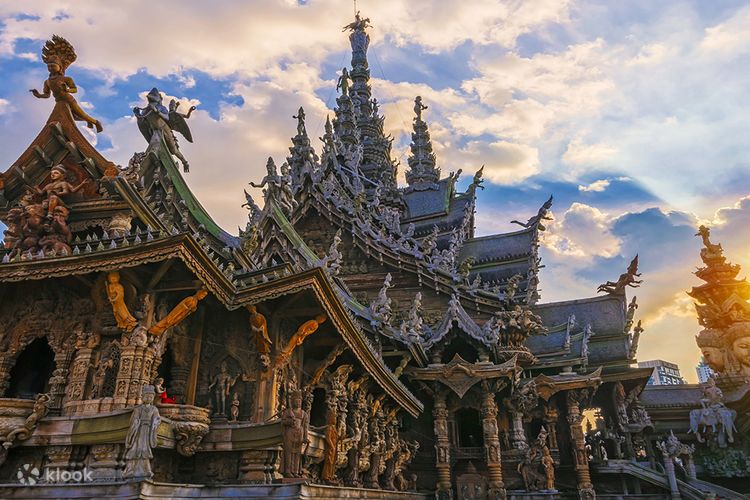
This image is property of res.klook.com.
Art and Craftsmanship in Thai Temples
The artistry and craftsmanship displayed in Thai temples are a testament to the skill and dedication of the artisans. Let’s explore the various forms of art and craftsmanship found in Thai temples:
Traditional Thai Temple Murals
Thai temple murals, known as “phanon,” occupy a significant place in Thai art history. These intricate and vividly colored paintings depict Buddhist stories, mythical creatures, and scenes from daily life. The murals serve as a visual narrative that educates and inspires worshippers, transporting them into a world of spiritual teachings and cultural heritage.
Sculptures and Decorative Artwork
Thai temples are adorned with exquisite sculptures and decorative artwork that showcase the skill of the craftsmen. Sculptures of Buddhist deities, celestial beings, and guardian figures can be found throughout the temple complex. These sculptures are typically made from materials such as wood, stone, bronze, or gold, and are characterized by their delicate detailing and expressive features.
Craftsmanship in Buddhist Objects and Ornaments
Thai temples are home to a vast array of Buddhist objects and ornaments that require masterful craftsmanship. Intricately designed temple bells, golden umbrellas, and ceremonial vessels are just a few examples of the fine craftsmanship found in Thai temples.
Additionally, Thai artisans excel in the creation of sacred amulets, which are small charms believed to hold special powers and protection. These amulets are made from various materials, such as precious stones, metals, or wood, and are often worn by devotees as a symbol of faith and spiritual connection.
Conclusion
Exploring Thai temples is a journey into the heart and soul of Thailand, offering a glimpse into the country’s rich culture, spirituality, and architectural marvels. Through their distinctive features, intricate ornamentation, and cultural significance, these temples serve as tangible links to Thailand’s past and continue to play vital roles in the present.
By understanding and appreciating the beauty and symbolism behind Thai temple architecture, we can deepen our connection to Thai culture, spirituality, and the timeless wisdom of Buddhism. Whether exploring the ornate facades of iconic temples or participating in vibrant festivals, each visit to a Thai temple provides an opportunity for personal growth, reflection, and connection.
As custodians of these architectural marvels and spiritual sanctuaries, it is our responsibility to ensure their preservation and sustainability for future generations. By supporting conservation efforts, promoting eco-friendly practices, and engaging with local communities, we can contribute to the continued exploration and appreciation of Thai temples as invaluable treasures of cultural heritage.
So, as you embark on your journey to explore the wonders of Thai temples, remember to approach with respect, curiosity, and an open heart. Allow yourself to be captivated by the rich history, exquisite craftsmanship, and serene spirituality that awaits you within these remarkable architectural marvels and spiritual sanctuaries.
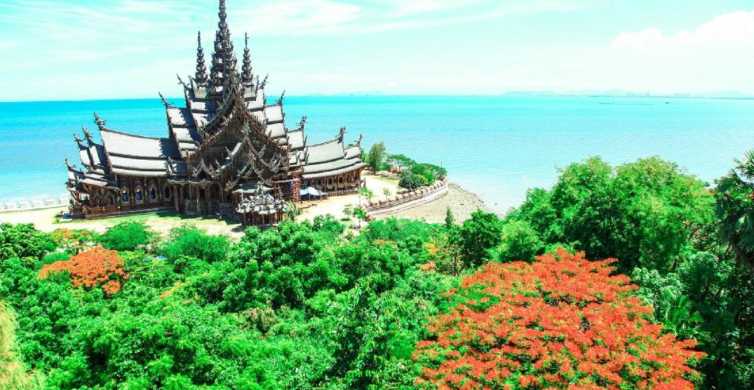
This image is property of cdn.getyourguide.com.
